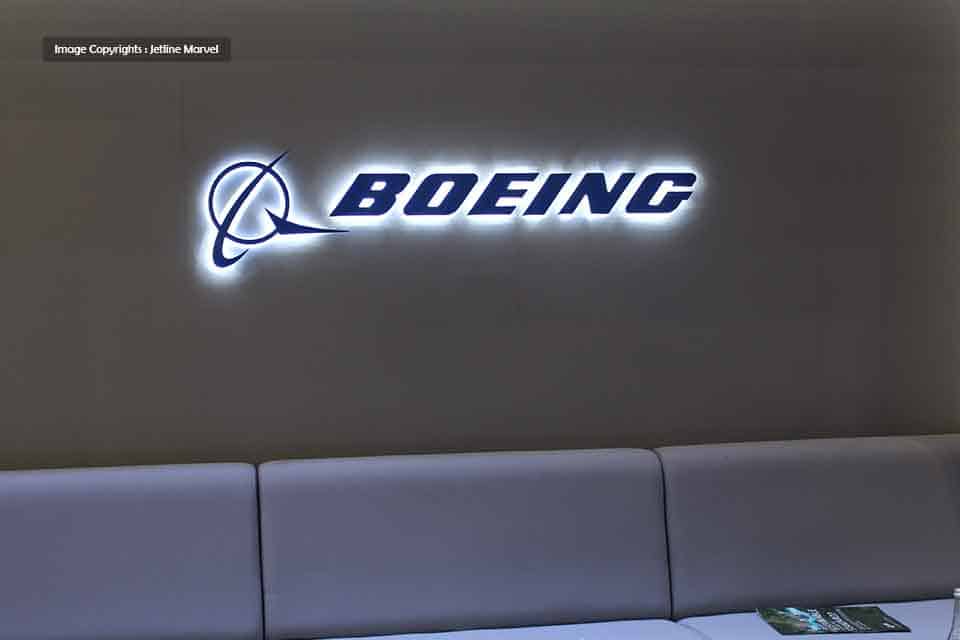Aerospace
Boeing CEO Resigns Amid 737 MAX Crisis, Ignites Management Overhaul

Boeing CEO Dave Calhoun has announced his resignation amidst the ongoing 737 MAX crisis, signaling a significant top management shakeup at the aerospace giant.
While Calhoun will continue leading the company until the end of 2024, his decision comes amid mounting pressure following a series of setbacks, including the recent incident involving an Alaska Airlines flight. This departure coincides with the retirement of Boeing Commercial President and CEO Stan Deal, who is succeeded by Stephanie Pope, the current Chief Operating Officer.
The announcement, made by Larry Kellner, boeing products chairman, outlines a broader restructuring within the company’s leadership. Steve Mollenkopf, a Boeing director since 2020 and former CEO of Qualcomm, will take over as chairman and lead the board in selecting a new CEO. This strategic move comes at a critical juncture as boeing airplanes
faces intense regulatory scrutiny and production constraints due to safety and quality issues.
The market’s initial response to the news was positive, with Boeing’s shares rising by 2 percent before regular trading. However, the boeing aircraft company stock had experienced a significant decline earlier in the year, reflecting investor concerns about boeing distribution aviall the ongoing challenges and uncertainties surrounding the 737 MAX program.
Calhoun stressed the company’s commitment to transparency, safety, and quality in a letter to employees.“We must continue to respond to this accident with humility and complete transparency. We also must inculcate a total commitment to safety and quality at every level of our company,” he said.
“The eyes of the world are on us, and I know we will come through this moment a better company, building on all the learnings we accumulated as we worked together to rebuild Boeing over the last number of years.”

Aerospace
Boeing Transfers Rocket Stage to NASA, Paving Way for Human Moon Mission

Boeing has achieved a significant milestone by providing NASA with the second core stage of the Space Launch System (SLS) rocket.
This crucial component, crafted at NASA’s Michoud Assembly Facility (MAF), is set to propel the Artemis II crew into lunar orbit, marking humanity’s return to deep space after a 50-year hiatus.
The monumental Boeing-built rocket stage, the largest element of the Artemis II mission, will embark on a journey aboard the Pegasus barge, traveling 900 miles to NASA’s Kennedy Space Center.
Comparison of two legendary aircraft B777x vs B747 aircraft:Click here
Upon arrival, it will be meticulously integrated with other essential Artemis II components, including the upper stage, solid rocket boosters, and NASA’s Orion spacecraft within the iconic Vehicle Assembly Building. This intricate integration process is a vital step toward the eagerly anticipated Artemis II launch, slated for 2025.
“Boeing-built products helped land humankind on the moon in 1969, and we’re proud to continue that legacy through the Artemis generation,” remarked Dave Dutcher, vice president and program manager for Boeing’s SLS program. “Together, with NASA and our industry partners and suppliers, we are building the world’s most capable rocket and paving the way to deep space through America’s rocket factory in New Orleans.”
NASA, Lockheed Martin Reveal X-59 Quiet Supersonic Aircraft:Click here
The delivery of Core Stage 2 marks a significant achievement in the evolution of the SLS rocket. Towering over 200 feet and powered by four RS-25 engines, this core stage, coupled with two solid-fueled booster rockets, will generate a staggering 8.8 million pounds of thrust. This immense power is crucial to launching Artemis II and future missions into the vast expanse of space.
The SLS rocket stands unparalleled in its capability to transport both crew and substantial cargo to the moon and beyond in a single launch. Its extraordinary capacity will facilitate the delivery of human-rated spacecraft, habitats, and scientific missions to destinations including the moon and Mars, ushering in a new era of space exploration.
-

 Travel1 week ago
Travel1 week agoAir India to Expand US Operations with Three New Routes After a Decade
-

 Travel2 weeks ago
Travel2 weeks agoWhy We Should Avoid These Stamps in a Passport
-

 Airlines1 month ago
Airlines1 month agoInvestigations Reveal Fake Chinese Titanium in Boeing and Airbus Jets
-

 Tech4 weeks ago
Tech4 weeks agoChina’s CATL Plans 1,800-Mile Electric Plane Launch by 2027
-

 Airport3 days ago
Airport3 days agoTop 10 Largest Airports in the World by Size
-

 Aerospace4 weeks ago
Aerospace4 weeks agoChina’s Fighter Jets Turn Wings into Autonomous Drones
-

 Airlines4 days ago
Airlines4 days agoAir India Rolls Out A350s for Delhi-New York JFK and Newark Routes
-

 Defence3 weeks ago
Defence3 weeks agoBoeing Enhances Chinook with New Engines and Block II Upgrades at $96 Million







